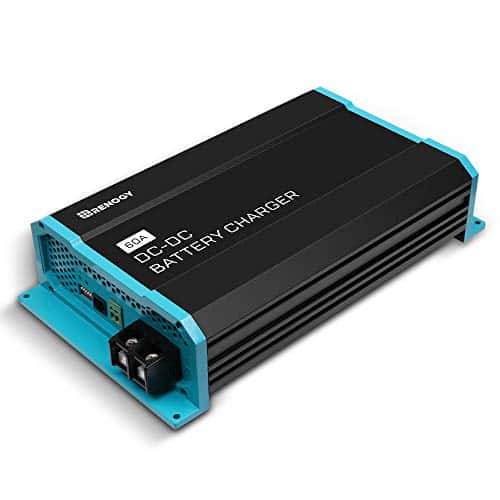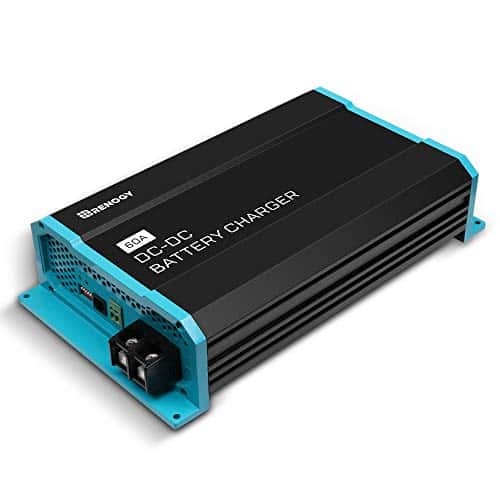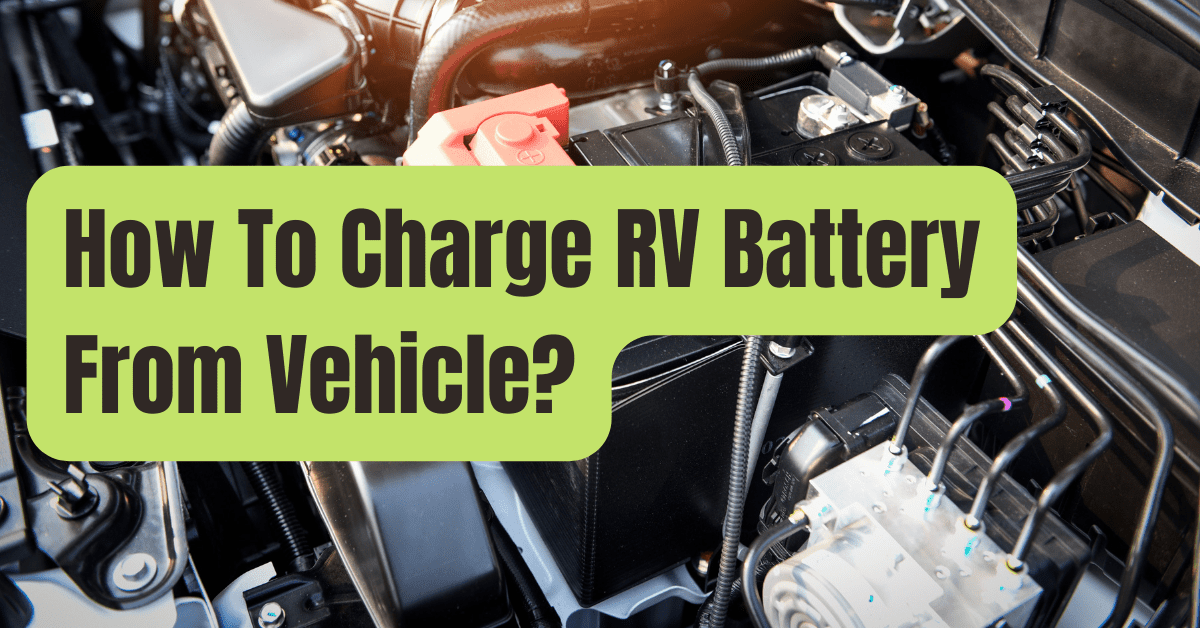The conveniences of home that we bring with us while RVing, such as lights, TVs, phone chargers, certain appliances, etc., all depend on electricity to function.
As a result, it’s critical to maintain your RV batteries charged and prepared for use.
Fortunately, there are a number of methods to do this, and one of them involves using your own vehicle, whether it be a tow vehicle or the recreational vehicle itself, as a charging source.
Let’s briefly go through how to use your car to charge an RV battery.
Additionally, learn how to dramatically speed up charging!
How Can I Recharge the Battery in My RV While Driving?
As long as you have a 7 pin travel trailer plug, you may charge your RV batteries while travelling in your truck (or any other tow vehicle).
And if you own a motorhome, the alternator in your RV should automatically recharge the batteries in both your home and your car while the engine is running (in most models).
When you boondock without electricity hookups for a short while, this actually comes in useful.
Tip: Use your onboard or portable generator rather than the car’s motor to recharge the home batteries if you need to while it’s parked.
It is not advisable to start your car and just utilize the alternator to charge the home batteries.
Having said that, don’t count on your engine’s alternator to fast recharge your home batteries while you’re traveling.
It will at most provide a modest trickle charge for the home batteries.
Let’s find out why that is and how to make it go faster!
How Long Does It Take a Truck to Charge an RV Battery?
Using your alternator to charge your RV house batteries while your motor is running is a sluggish procedure, as we just explained.
Here’s why.
Let’s first comprehend the two sorts of batteries your RV uses:
- The starting battery, also known as the chassis battery, powers the automobile’s electronics, including the car radio, turn signals, headlights, and turn signals. While the engine is running, the alternator continuously charges the starting battery.
- The RV’s 12v house battery or bank of batteries (often a lead-acid, deep cycle battery, but lithium batteries are sometimes used) powers everything electrical in your living space while you aren’t connected to shore power.
If your RV has a 7-way connection link between your tow vehicle and your travel trailer, the electronic brakes, running lights, turn signals, and brake lights are now now powered by the starting battery of your RV.
Therefore, there is not much power left over to recharge the house/trailer battery after regularly charging the starting battery and running the RV’s necessary lights.
In other words, there isn’t enough energy to do the task effectively.
How to Quickly Charge Your RV Battery from a Car
Fortunately, you can transform that sluggish trickle charge into a quick, strong charge by using a DC to DC adapter! When using this device as a component of the system to charge your home batteries, it’s like comparing a garden hose to an eyedropper.

Renogy DC to DC Battery Charger (20, 40, or 60 amp)
If you use this link to buy anything, we could be paid a commission without charging you anything more.
A DC to DC battery charger built into your charging system functions as an electrical pump to increase the voltage and amps produced by the vehicle’s alternator, giving the home batteries a faster and more powerful charge.
With a DC to DC battery charger, the maximum amperage is more like 20 amps as compared to merely 5 amps without one.
A basic understanding of electrical systems and a few tools are needed for installation, but it’s a reasonably simple procedure.
Always take safety measures carefully while working on your car’s electrical system and read the owner’s handbook thoroughly for crucial safety information.
Electrical shock is a possibility anytime you operate on an electrical system.
To make the installation of the well-liked and highly suggested Renogy DC to DC Charger as simple as possible, we have included a comprehensive DIY installation video instruction below.

Renogy DC to DC Battery Charger (20, 40, or 60 amp)
If you use this link to buy anything, we could be paid a commission without charging you anything more.
Important: It’s best to employ a specialist to install a DC to DC charger in your car if you don’t feel comfortable doing it yourself.
To connect your vehicle so that a DC to DC charger may charge your camper batteries more quickly, adhere to these basic recommendations.
For accurate and product-specific instructions, always read and abide by the manufacturer’s directions.
Tip: Download the Renogy DC to DC charger user manual to learn more about installation procedures, safety considerations, and other topics.
Is The Battery In Your RV Not Charging As You Drive?
It generally boils down to frayed wire or a faulty solenoid if your RV batteries isn’t charging while you’re traveling (of many potential possibilities).
The electrical connections from the alternator back to the batteries should first all be examined.
Locating all of the connections will be made easier if you download the wiring diagram for your specific RV’s make and model.
Start your rig and check the voltage at the terminals, which should be approximately 14 volts, to check for a bad solenoid if all connections seem to be in order.
If the wiring and solenoids are in working order, there may still be a number of problems, such as a blown fuse, faulty house batteries, problems with the bird relay or battery isolator, a faulty battery control center (BCC) box, a faulty alternator, etc.
Make that all fuses are in working order, and that the relays and batteries are operational.
Take your recreational vehicle to a licensed technician for examination if the issue continues.
Additional RV Battery Charger Methods
There are alternative methods to charge your home (and, in many instances, even the chassis) batteries and power your electrical gadgets without charging your RV batteries while traveling.










